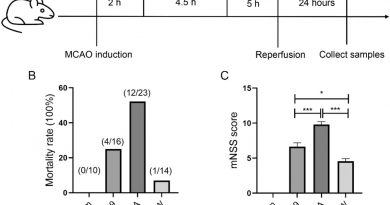Summer outbreak of norovirus could mean another winter crisis for NHS
Mutated strain of norovirus could be behind the summer outbreak of the winter vomiting bug and may spark another crisis for the NHS, public health expert warns
- The nasty bug added to the huge pressure on the NHS in its ‘worst ever winter’
- Cases of the winter vomiting bug struck thousands of patients across the UK
- But Dr John Harris, of Liverpool University, warned this winter could be worse
29
View
comments
Thousands of patients have been struck down by the winter vomiting bug this summer, official figures suggest.
Public Health England data shows 780 people have caught norovirus since May, when the UK first began to bask in the heat.
But experts claim the true number is likely to be in the thousands, as PHE data is based only on confirmed laboratory reports.
Reports are now emerging of ‘unusually high’ numbers of people battling both diarrhoea and vomiting – even though officials claim it is not norovirus.
A lecturer in public health at Liverpool University has now warned, in a piece for The Conversation, that the NHS could be crippled this winter, if the cases really are down to norovirus.
Dr John Harris claims unprecedented levels of the bug this summer could be a sign of a mutated strain – which would lead to even greater numbers of cases this winter.
Escalated levels of norovirus were blamed for the NHS’ ‘worst ever winter’, alongside an unusually severe flu season and funding issues.


Dr John Harris, of Liverpool University, said the bug added to the unprecedented pressure on the NHS during its ‘worst ever winter’ (stock)
Apparently there is a bug going around. Local and national press are reporting unusually high numbers of people suffering with diarrhoea and vomiting in Britain this summer.
The reports suggest that this is a short-lived illness, with a sudden onset, but nonetheless very unpleasant.
Is it a norovirus outbreak? Public Health England (PHE) reassures that their laboratory data on norovirus is within expected levels for the time of year. So what’s going on?
The biggest difficulty is that only a small proportion of those who fall ill will seek medical help and, of those, even fewer will supply a sample for analysis to determine the cause of their illness. Of course, this may be a good thing.
-
 Men don’t fib about having lots of lovers – they’re just…
Men don’t fib about having lots of lovers – they’re just…  At-home lamp can treat painful ulcers and varicose veins:…
At-home lamp can treat painful ulcers and varicose veins:…  Having multiple children may ‘age women’s cells faster,’…
Having multiple children may ‘age women’s cells faster,’…  Kraft Heinz recalls Taco Bell cheese dip over botulism risk:…
Kraft Heinz recalls Taco Bell cheese dip over botulism risk:…
Share this article
If it is norovirus then it’s highly infectious, and the last thing anyone wants is for it to be brought into a setting where it can infect other, possibly vulnerable people.
So the advice is stay away from hospitals and GP surgeries unless the symptoms are more severe, such as bloody diarrhoea, or have persisted for longer than three days.
On the trail of the disease
Without a sample, we cannot be sure that norovirus is responsible. There are other viruses which cause sudden onset diarrhoea and vomiting, so symptoms alone aren’t enough for a diagnosis.
WHAT IS NOROVIRUS AND HOW LONG WILL IT TAKE TO CLEAR UP?
Norovirus is one of the most common stomach infections in the UK and it is referred to winter vomiting bug as it usually occurs in winter.
Usually it clears up by itself within 24 to 48 hours but it can very serious for already frail patients, and can lead to dehydration.
The virus, which can also cause diarrhoea, is extremely contagious and can create huge disruption in hospitals as it spreads so quickly between patients.
But the winter vomiting bug has a tendency to mutate and some strains are worse than others, leading to higher numbers of infections.
There are criteria that can be used to determine the likelihood of an outbreak being norovirus however.
Known as ‘Kaplan’ criteria, they include the absence of a bacterial cause, vomiting occurring in 50 per cent or more of the cases, an incubation period of 24-48 hours and an illness duration of around 12-60 hours.
These criteria are specific to outbreaks not individual cases and given that the latest reports of the disease are occurring in the community rather than in healthcare settings, it is highly unlikely samples will have been taken to definitively diagnose norovirus, or rule out another cause.
So is there really no serious norovirus outbreak, as PHE says? Their own surveillance suggests that there has been a rise in the number of calls complaining of diarrhoea and vomiting to telephone health helplines, mostly associated with young children.
But this is surveillance of symptoms appearing among the public, it tells us nothing of what pathogens might be present.
But we must also be careful of putting all of our trust in laboratory reports of norovirus, as national lab data are mostly from older people aged 65 or over and so are representative mainly of what is going on in care homes and hospitals, rather than what is happening in the community in real time.
As it takes time after any outbreak starts for samples to be submitted for testing, there is also always a lag between laboratory reports of norovirus and community activity.


To avoid spreading norovirus people should stay away from hospitals and GP surgeries unless their symptoms are severe, such as bloody diarrhoea, or have persisted for longer than three days
ARE CASES OF NOROVIRUS AT WORRYING LEVELS?
Norovirus is not yet at a concerning level, as the number of cases are on par with the average over the past few years.
Since July 12, there has been 6,719 reported cases of the infection in England and Wales.
This, according to Public Health England (PHE), is comparable to – and is lower than – the average for every year since 2012, which is 6,925 cases.
And PHE says the number of outbreaks in hospitals during the past month is lower than in previous years, but does not give specific figures.
The number of cases this year is nearly half that of 2009/10, when more than 12,000 infections were reported.
Source: Public Health England
Worse ahead this winter?
Norovirus infections can occur at any time of the year, but happen most often during the winter months – hence its old name ‘winter vomiting disease’.
Norovirus activity can also be localised – there might be increased activity in one area but not in others.
Unusual summer activity has been reported in the past. It happened in the spring and summer of 2002 and was later associated with the emergence of a new strain of the virus.
JUST HOW STRETCHED IS THE NHS?
Waiting times at over-stretched A&E units are at their worst level since records began, according to official figures in April 2018.
Experts said the NHS was in the grip of an ‘eternal winter’ and many hospitals are still struggling to cope with the unprecedented pressure.
Health and Social Care Secretary Jeremy Hunt was forced to admit it was the ‘worst winter ever’ amid a severe outbreak of flu and cold weather.
Chiefs cancelled thousands of operations in a controversial move to ease pressure. And experts have suggested this may be the only option to stop a crisis next year.
The latest monthly data from NHS England also shows that waiting times for routine operations, such as knee and hip replacements, are at their highest since 2004.
And violent assaults on staff have risen by 10 per cent in a year – partly driven by frustration with waiting times.
The midsummer peak of 2002 was notable compared to the previous six years when there was a considerable decline in norovirus activity during the summer months.
Following the increased summer activity of 2002, there were more cases than usual reported in the following winter, higher than any of the preceding years.
Now, 16 years later, are we on the cusp of a new viral strain? And will it mean a winter crisis for the NHS?
At the moment, it’s too early to say what is going on this summer and what will happen in the near future. What this does highlight, however, is the need to establish surveillance which considers various sources of reporting.
Calling on multiple evidence sources
Relying on one source for tracking an underreported pathogen, such as using laboratory reporting or health helpline monitoring, won’t give a real time picture.
There is a need to develop a wider and more integrated approach for the surveillance of norovirus.
Using indicators from different sectors, such as school absences and social media posts about symptoms, as well as population reporting methods, such as the volunteer ‘flusurvey’ scheme, there is the potential to improve real-time surveillance.
It is not likely that any testing will detect changes in the genome of norovirus until enough samples have been received by PHE and this will be some time after the event in any case.
That said, surveillance is not just an exercise in counting – it is also there to provide information that can be acted upon.
It might come to nothing, as in the winter of 2012/2013 when there were numerous news reports of greater than expected norovirus cases in the UK.
That winter turned out to be fairly ordinary and was only exceptional for how early in the season a flurry of confirmed cases came.
This was also later found to be associated with another variant of the virus which, happily, did not lead to the busy season that was predicted at the time.
But forewarned is forearmed. Given the strain on resources that the NHS has suffered in previous winters, and the trend in 2002 when a summertime outbreak led to a winter epidemic, it would be wise to prepare now and be particularly vigilant with infection control to help mitigate potential outbreaks.

Source: Read Full Article



